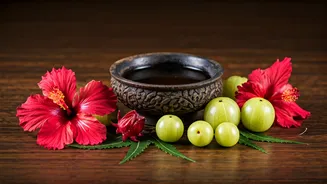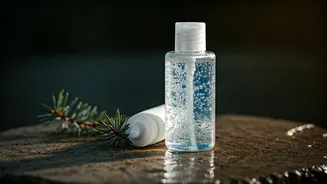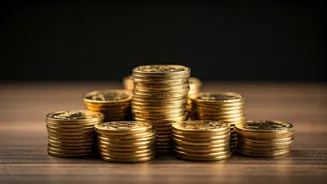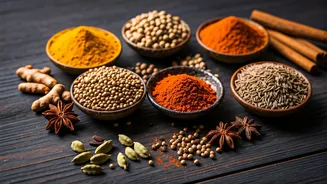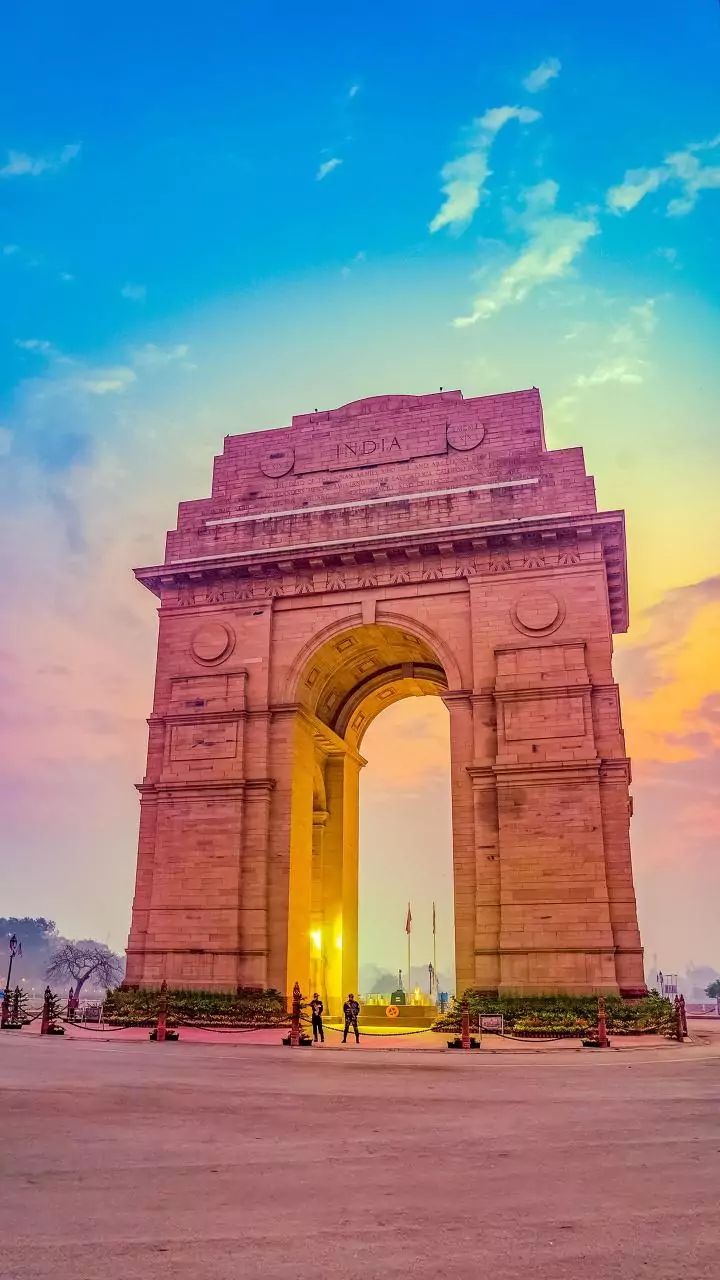Oil Massage: The Foundation
The cornerstone of Indian hair care has always been oil massage, a ritual that goes far beyond simple application. The practice involves using warm oils,
such as coconut, sesame, or amla, and gently massaging them into the scalp. This technique not only moisturizes the hair and scalp but also stimulates blood circulation, promoting hair growth and preventing dryness. The oils are often infused with herbs, adding benefits like dandruff control or strengthening hair follicles. The massage itself is a form of relaxation, offering stress relief while nourishing the hair. It's often followed by wrapping the hair in a warm towel to enhance absorption and leave the hair feeling soft and revitalized.
Herbal Hair Masks
Herbal hair masks are another key element in traditional Indian hair care. These masks utilize ingredients sourced from nature to treat various hair concerns. Ingredients like neem, fenugreek (methi), and hibiscus are commonly used. Neem is known for its antibacterial properties, helpful in treating scalp issues. Fenugreek, soaked and ground into a paste, strengthens hair and adds shine. Hibiscus promotes hair growth and prevents premature greying. These masks are typically mixed with water or other ingredients like yogurt or aloe vera to create a paste. The mask is applied to the hair and left for a specific duration, allowing the active components to work before rinsing. Regular use provides noticeable improvement in hair texture and overall health.
Amla: The Superfood
Amla, also known as the Indian gooseberry, holds a significant place in Indian hair care. It is a powerhouse of nutrients, including Vitamin C and antioxidants, which are essential for hair health. Amla can be incorporated in several forms, such as amla oil, amla powder, or even consumed in its raw form. Amla oil helps to strengthen hair follicles, reducing hair fall and promoting thicker hair growth. Amla powder can be mixed with water to create a paste that conditions the hair, adds shine, and combats premature greying. Its use is rooted in the belief that it not only enhances the physical appearance of hair but also promotes overall well-being. Regular integration of amla into a hair care routine can lead to significant improvements in hair health.
Shikakai: Natural Cleanser
Shikakai has been used for centuries as a natural hair cleanser in India. This herb, known for its gentle cleansing properties, is often preferred over harsh chemical-laden shampoos. Shikakai gently cleanses the scalp and hair without stripping away natural oils. It also helps to detangle hair and add shine. Traditionally, shikakai pods are ground into a powder and mixed with water to create a paste. This paste is then used to cleanse the hair, similar to how one uses shampoo. Shikakai is also known to promote hair growth and treat dandruff. Its use reflects a move towards natural and sustainable hair care, supporting the hair's natural balance. Using Shikakai is a gentle approach to cleansing and maintaining healthy, beautiful hair.
Diet and Hydration
Beyond external treatments, traditional Indian hair care emphasizes the importance of internal health, including diet and hydration. A balanced diet, rich in essential vitamins and minerals, is critical for hair growth and overall hair health. Foods like fruits, vegetables, and protein-rich sources provide the necessary nutrients. Staying hydrated is also very important, as water ensures the scalp and hair remain moisturized, thus avoiding dryness and breakage. Many believe that the health of one's hair reflects one's overall wellness. Following a balanced diet, drinking enough water, and incorporating nourishing foods like nuts, seeds, and leafy greens contributes to strong, vibrant hair. These habits work in conjunction with topical treatments to provide comprehensive hair care.
